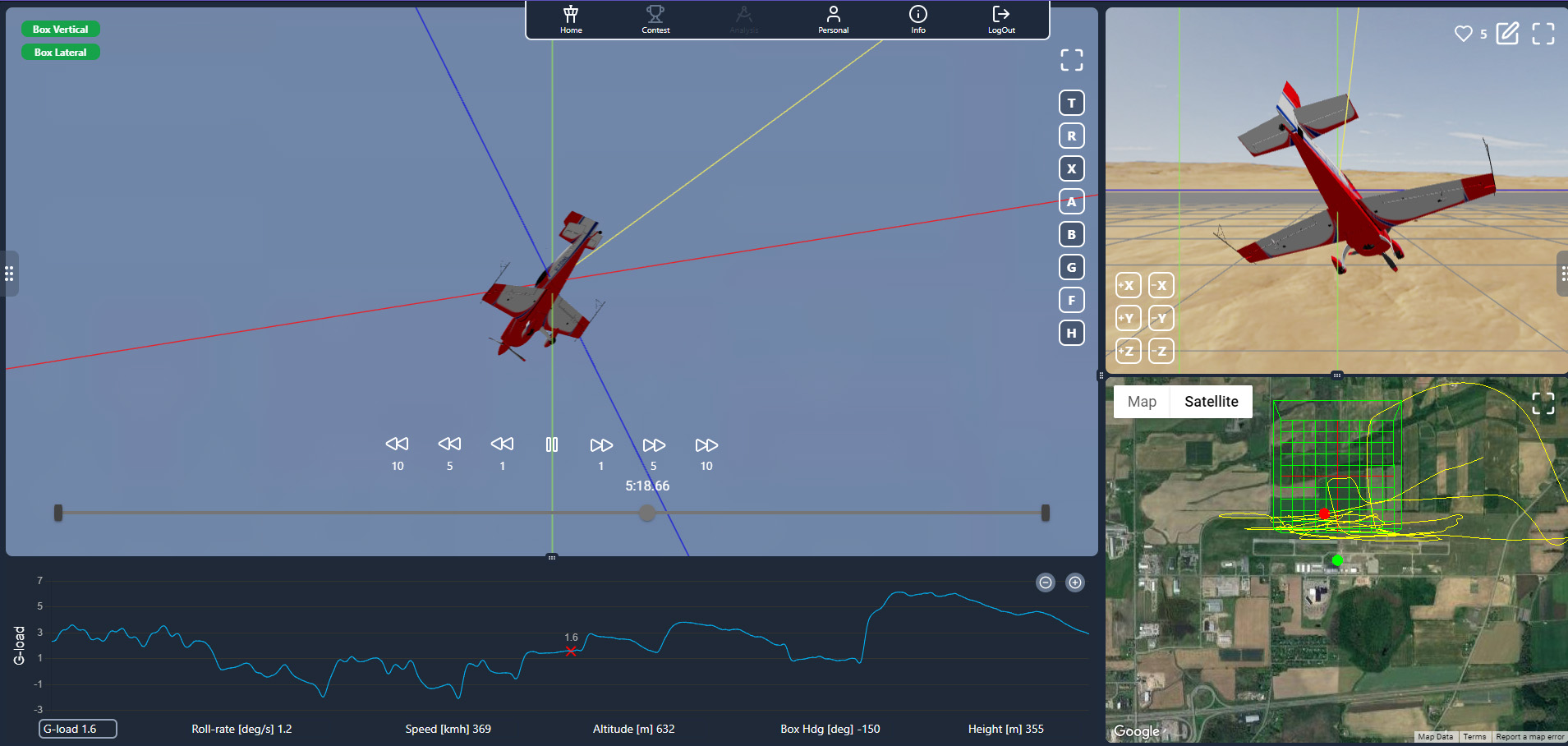Let the world watch you fly
Data module, website enable anyone to visualize flights
Aerobatic pilots—and competition judges—who strive for perfection may be the most obvious users, but Acrowrx creator Paulo Iscold wants everyone to enjoy aerobatics from anywhere in the world.
The concept of global engagement in aviation sport drives Iscold’s latest venture, a website crafted largely by Christopher Sheehan, one of Iscold’s students at California Polytechnic State University, that serves as a global data sharing platform for pilots—and aspiring pilots—and could transform competitive aerobatics, a singularly individual sport, by enabling crowd-pleasing virtual perspectives on flights that few among us could otherwise participate in.
Brian Taylor, founder and CEO of Bolder Flight Systems, created a $499 flight data capture module called OnFlight Hub for gliders, and has helped propel the increasingly popular practice of flight data sharing enabled by online platforms such as OLC and WeGlide that enable glider pilots to share data and compete with peers flying anywhere in the world. The device, like Iscold’s own, is roughly the size of a deck of cards, and easy to mount in an aircraft.
“This is a great success today. Believe [it] or not, this is increasing the participation in in-person competition,” Iscold said of those glider flight sharing platforms, which give many newer pilots the confidence to step further into aviation competition—particularly when they get positive feedback and encouragement from fellow pilots.
“Despite all the challenges we face in general aviation … you see more young people coming to glider competition[s], and they actually start in the online competition. And that’s when I say, OK, let’s do this for aerobatics.”
While the OnFlight Hub captures position, heading, and acceleration data at a slower rate than Iscold’s design (50 data points per second, rather than 100), and it cannot track certain parameters such as flight control positions, it turned out to be perfectly capable of capturing the dynamic power moves of an Extra 300L with very few errors.
Acrowrx users can create a free account to view a small but growing number of flights, including uploads from champion aerobatic and airshow pilots Mike Goulian and Rob Holland.
Users who pay $15 a month to upload their own data for analysis can invite others to judge their competition flights, viewing a virtual aircraft from any perspective, though the default perspective is from the ground—where aerobatic competition judges watch each flight and score the maneuvers.
“The point of view that really matters is what a person on the ground sees when you fly your routine,” Iscold explained in a videoconference demonstrating his latest creation. He noted that the tool—which allows users to move the virtual camera around at will—has also helped airshow pilots hone their routines after seeing exactly what each maneuver looks like from various spectator perspectives.
Iscold said there are currently about 80 Acrowrx users flying the OnFlight Hub, and fewer than 10 flying Iscold’s somewhat more capable unit, which he does not expect will ever be in hot demand. Among the few who have flown it is Holland, who recently added to his impressive trophy collection by winning his sixth freestyle title at the FAI World Aerobatic Championships in August.
Iscold said Holland was initially skeptical that he’d find the data logging useful before he flew with it, but once he did, he “just 100 percent engaged with it, 100 percent supported” the endeavor. “He gave me a lot of ideas about the software” and also provided a potent proof of concept: “If Rob cannot break this, who else can break it?”
Acrowrx users who pay to upload their recorded flight data can synchronize it with footage captured by action cameras, adding another layer of insight. Flights can be paused, rewound, and replayed, and various measurements can be superimposed to determine the exact angle of an upline, or calculate the precise rate of any roll. Competition pilots can review their flights and see them as a judge would, helping them better understand the subtle adjustments that pilots like Holland make to achieve higher competition scores. For example, the parallax effect causes 45-degree uplines to appear steep or shallow, depending on whether the aircraft is approaching the judge, or flying away from the judge. Savvy pilots will adjust their lines slightly to account for that.
“You need to learn those tricks,” Iscold said. “Before this was all just theory… people tell you that and you had to believe … you can’t find how much you need to cheat [by flying a steeper or shallower line] to make it look nice.”
The tool Iscold and Sheehan created is equally useful for training aerobatic contest judges, and its proliferation could potentially make aerobatic competition more objective than subjective, in much the same way modern technology could theoretically replace human umpires calling balls and strikes in Major League Baseball with a computer system that never gets it wrong.
Iscold said the aerobatic community is roughly divided between those who believe that more automated scoring is the ideal future, and those who will resist that—like many baseball fans—to preserve the human element of subjective judging in the moment, from the ground.
“I think the beauty of this is that I don’t need to take a side,” Iscold said. “I think the tool has the potential to help both sides of the coin.”
Iscold said his latest project is more about opening the world of competition aerobatics—and GA—to more people, and drawing them in to help reverse the trend of dwindling participation.
“Everything happens behind the fence… a young kid doesn’t see anything happen,” Iscold said. “What I envision with this is that because we have the free subscription, you can see everybody else’s flight … any person in the world can engage in this community scoring this flight. Beyond anything, my goal is, again... is to bring aviation closer to people.”





